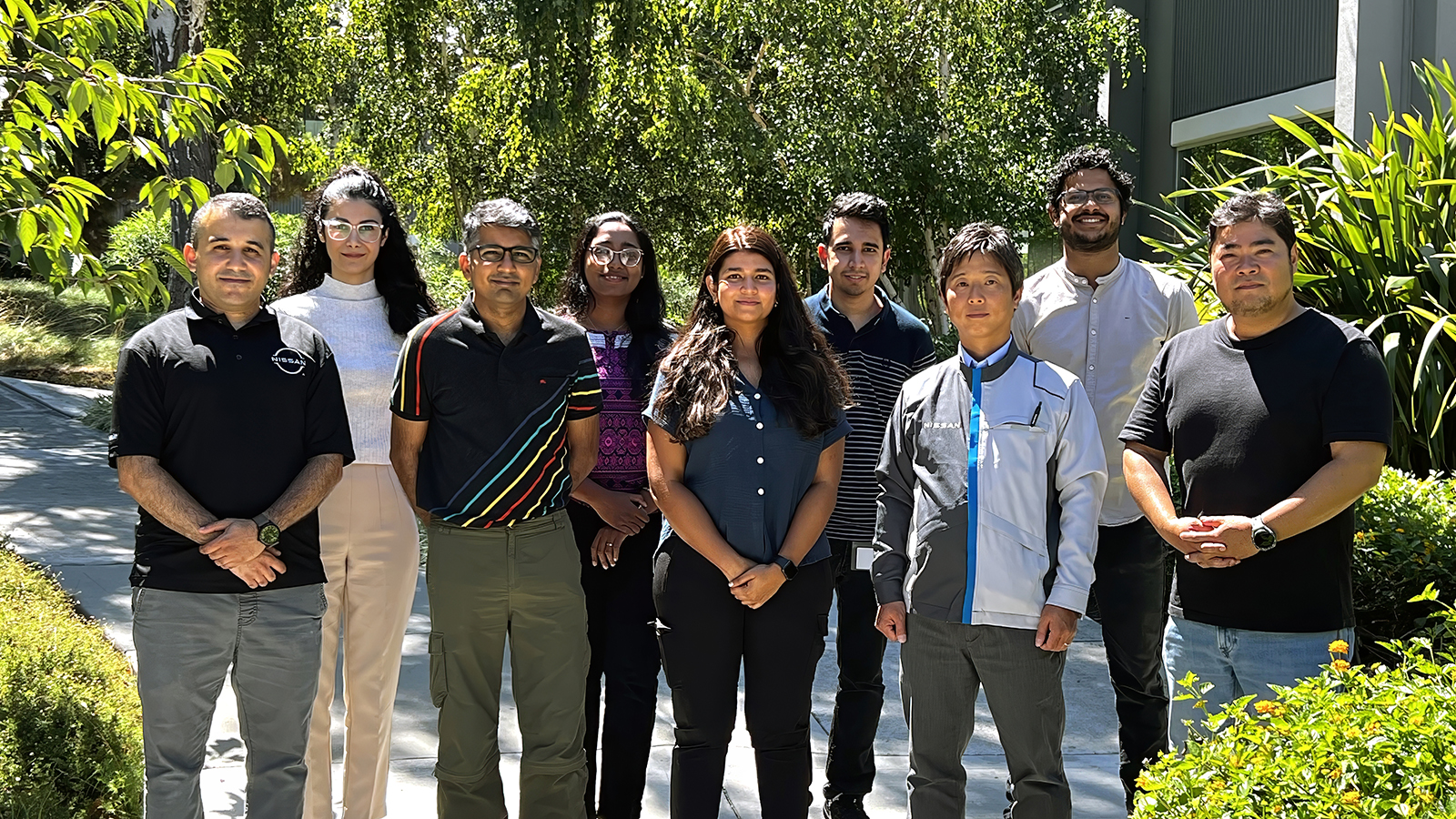‘1,000 times faster’: AI machine learning is turbo-charging research speeds at Nissan’s future-focused Silicon Valley lab
The Materials Informatics team at the Nissan Advanced Technology Center Silicon Valley is accelerating future technical development at a mind-boggling rate
We all learned in middle school that the scientific method takes a long time: hypothesizing, experimenting, testing and continuing revisions. However, when it comes to developing new materials for future vehicle applications, a team at the Nissan Advanced Technology Center Silicon Valley (NATC-SV) is using artificial intelligence (AI), machine learning and big data to dramatically accelerate that process.
In fact, with big data AI analysis, a trial-and-error process that previously took up to 20 years can now be done in just two years.
The Materials Informatics team at NATC-SV is tasked with making the materials used in vehicles more efficient through advanced statistical analysis. It's a true testament to Nissan's global, collaborative approach: Deputy General Manager Shigemasa Kuwata says the team works with counterparts at the company's research facilities across the world to provide creative solutions to difficult problems.
The biggest challenge they address is one of time. Developing and testing new types of materials – whether for car parts, batteries or other applications – takes immeasurable hours as scientists use trial-and-error, experimentation and re-testing of materials.
"With machine learning and AI, you can simulate the properties of materials for a lot more cases than you can test experimentally, in a short time," said Bala Radhakrishnan, Principal Researcher, Simulation. "It can help you sample millions of materials, and then screen for candidates based on the properties that you want."
Compared to traditional research methods, he said, "AI and machine learning drastically reduce the time needed; it's about 1,000 times faster."
Nissan has identified select internal projects to observe and evaluate applications of AI, and the work being done at NATC-SV is part of the company's larger effort to quickly and safely bring the latest tech innovations to drivers. The AI and machine-learning applications being implemented at NATC-SV are distinct from generative AI tools, such as ChatGPT. The key difference is that generative AI creates new material, while machine learning uses existing material to make predictions.
NATC-SV team members use "glove boxes" in the new Materials Informatics lab. The devices provide a sealed, sterile environment for testing materials and conducting experiments.
Experimentation remains key
The Materials Informatics team sets benchmarks for the properties of a new type of material – maybe its conductivity or sensitivity to temperature or myriad other qualities – and runs AI-optimized simulations to test those factors. While researchers still experimentally validate all results, it makes the work more efficient.
"From the researcher's point of view, it helps them cut through the clutter. It's always more encouraging when you actually get things to work, fast," said Radhakrishnan.
Since 2019, the Materials Informatics group has filed multiple patents and published journal articles detailing their findings. While the exact nature of the team's work is confidential, Kuwata and Radhakrishnan say the AI-enhanced research has contributed to topics including solid-state battery technology. Nissan aims to bring laminated all-solid-state battery cells to market by 2028.
Leaders of the Materials Informatics team: (L-R) Shigemasa Kuwata, Bala Radhakrishnan and Masanobu Uchimura.
The team is also adding more scientific equipment to its lab to be able to conduct additional research and testing on physical material samples.
"The idea is that right after the simulation is complete, we can check it," said Kuwata. "We always need to check whether the simulation matches the real-world experiment, so that's why we need a lot of confirmation."
"Machine learning and AI are good as screening tools, but we still use some of the classical, physics-based approaches to have final confirmation of the materials' properties," said Radhakrishnan.
Humans in the loop
Leveraging AI and machine learning has not eliminated the need for experienced, skilled researchers, who use AI as a tool but rely on their own knowledge to make final decisions.
"Interpreting the simulations is still done by real humans," said Radhakrishnan.
Materials Informatics team members Sogol Lotfi (L) and Simran Kumari (R) collaborate in the new lab.
As a result, the Materials Informatics team continues to grow and is hoping to further expand its staff to keep up with the tremendous amount of data and analysis needed.
"We are growing because we need more technically sound people who can implement these algorithms," said Radhakrishnan.
Nissan engineers aren't just keeping pace with technological advances – they're creating them. AI is just the most recent example of how the Silicon Valley team is bringing the latest innovations to drivers everywhere – and they're doing it faster than ever before.
About Nissan USA Stories
The Nissan USA Stories page explores the best of Nissan's people, products, technology and more. New to the page? Subscribe here to receive alerts when a new story is published.
# # #
 |
Media Contact |
|
Eric Ruble |




